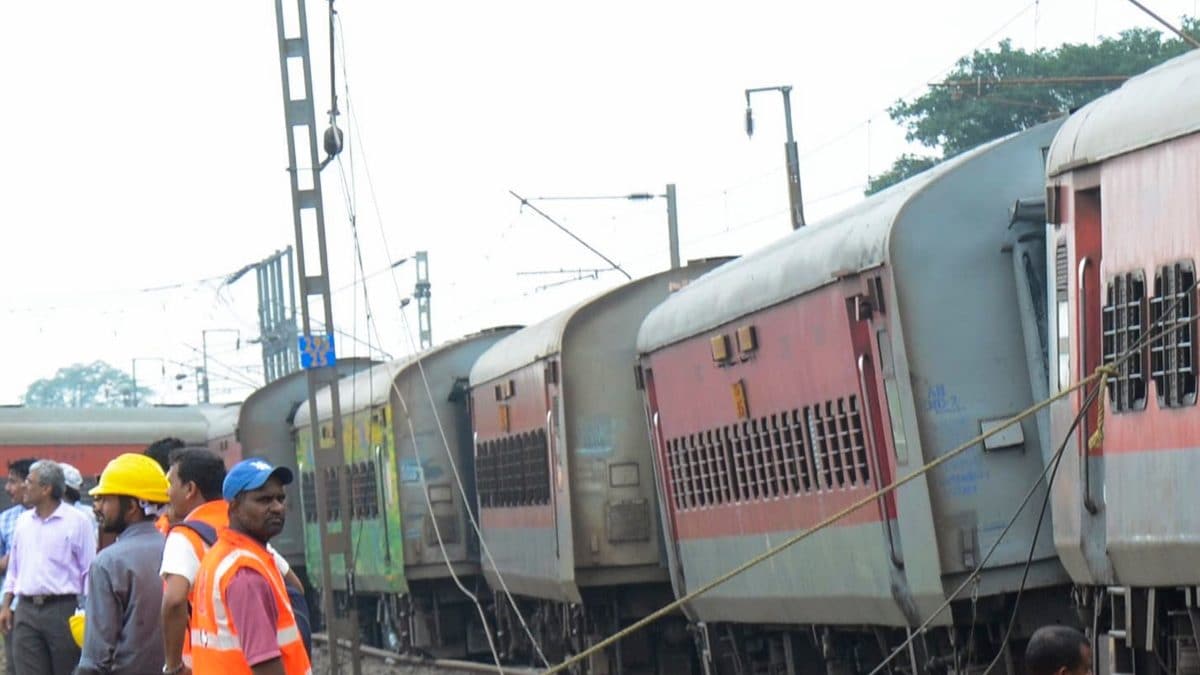The Mysuru-Darbhanga Bagmati Express (Train No. 12578) derailed on Friday night near Chennai following a collision with a stationary goods train. While initial investigations pointed towards technical errors as the primary cause, the incident sparked concern about potential sabotage or terror involvement. However, the National Investigation Agency (NIA) has ruled out any such angles, stating that the accident was likely due to a combination of factors related to signaling and train operations.
Technical Glitch or Human Error?
The accident occurred at the Kavaraippettai railway station, on the Chennai-Gudur section, between Ponneri and Kavaraippettai stations. According to official reports, the passenger train, after departing Chennai, mistakenly entered a loop line where a stationary goods train was parked. This unexpected entry resulted in the passenger train colliding with the goods train from behind, leading to the derailment of 12 coaches.
Signals and Protocols
The Southern Railway’s General Manager, RN Singh, revealed that despite the train having a green signal for the main line, the driver chose to enter the loop line. He also stated that the train’s signals were followed correctly by the driver after departing Chennai. This raises crucial questions about potential human error or a malfunction in the train’s signaling system.
The Possibility of Human Error
Human error plays a significant role in railway accidents. Possible causes include:
- Driver fatigue: Extended working hours or fatigue can impair a driver’s judgement, leading to misinterpretation of signals or improper response to situations.
- Distraction: Distractions within the train cab or from external sources can affect the driver’s focus, contributing to misreading of signals or incorrect actions.
- Misinterpretation of Signals: The driver may misinterpret a signal due to unclear visibility, technical defects in the signal system, or lack of proper training.
Analyzing the Technical Aspects
The NIA’s investigation will scrutinize the technical aspects of the incident to pinpoint the exact cause of the accident. Potential technical issues include:
Signaling System Malfunction
A malfunctioning signal system could be a contributing factor. The following aspects will be examined:
- Signal System Integrity: Thorough checks will be conducted to ensure that the signaling system was functioning properly and not compromised by external factors or technical defects.
- Signal Relay Accuracy: Investigation will focus on whether the signals transmitted correctly to the train driver’s cab and whether there were any miscommunications or transmission errors.
Train Communication Systems
The train’s communication systems will be assessed to identify any glitches:
- Train-to-Ground Communication: The investigation will review the communication between the train and the railway control centre.
- Inter-train Communication: If there were any issues with inter-train communication systems, they will be examined as a possible factor.
Ruling Out Sabotage and Terror
While the initial incident led to speculation of sabotage or terror-related activity, the NIA, after a comprehensive investigation, ruled out any involvement of such factors.
No Prior Intelligence
The agency confirmed that there were no prior intelligence alerts or inputs suggesting a planned attack on the train. This emphasizes that the derailment was not a deliberate act but an unfortunate accident.
Extensive Investigations
The NIA conducted thorough investigations at the accident site, interviewing witnesses and analyzing the evidence collected. The investigation covered the following areas:
- Physical Evidence: Thorough inspection of the train’s wreckage and track conditions will provide valuable clues regarding the accident.
- Witness Accounts: Interviews with passengers and railway staff who witnessed the incident can provide insights into the sequence of events.
- CCTV Footage: Any available CCTV footage from the area will be examined for crucial details about the events leading to the derailment.
Impact and Response
The derailment caused significant disruption to railway operations, with several trains being diverted or canceled.
Rescue Efforts
Immediately after the accident, rescue operations were initiated to assist the injured passengers and stabilize the situation.
Damage Assessment
Engineers are currently working to repair the damaged tracks and rolling stock, restoring the affected rail lines.
Takeaway Points
The Mysuru-Darbhanga Bagmati Express derailment highlights the importance of safety measures and robust investigative procedures in the railway system.
- Comprehensive Safety Audits: Regular and comprehensive safety audits of train signaling systems, communication equipment, and infrastructure are essential to ensure reliable and safe train operations.
- Driver Training: Continuous training programs for train drivers are vital to enhance their skills, knowledge, and responsiveness to ensure they can effectively manage complex scenarios.
- Technological Advancements: Integrating advanced technological solutions in signaling and train control systems can minimize the risk of human error and ensure smoother operations.
- Emergency Response Preparedness: Effective emergency response protocols, including clear communication channels and adequate training for staff, are crucial for timely and efficient assistance in accident situations.
The accident serves as a reminder of the need for constant vigilance and proactive measures to enhance safety across railway networks.




